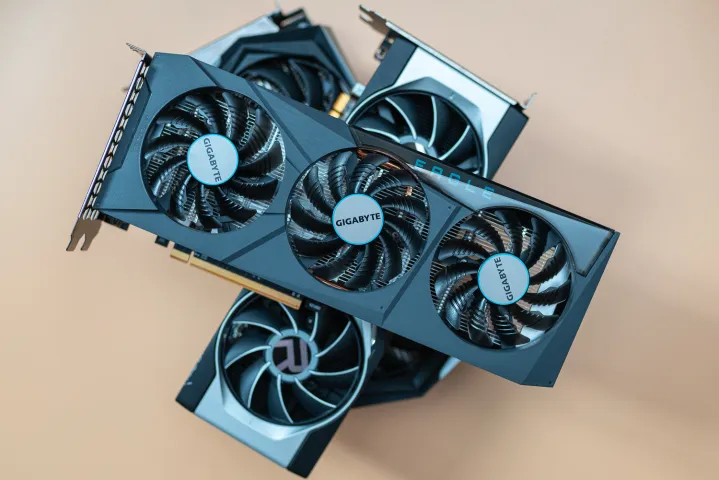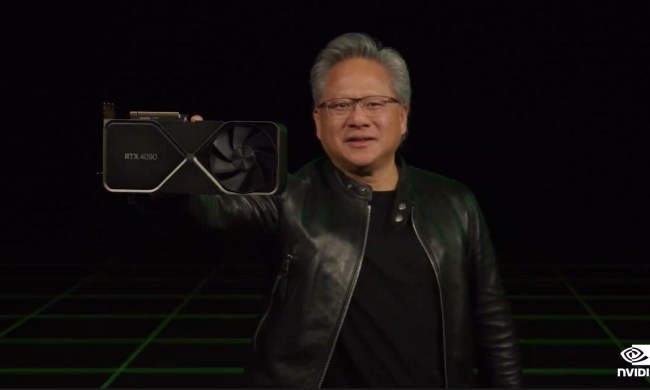The GPU industry may be a mere few months away from prices finally normalizing, with the recent trend of dropping costs for graphics cards now continuing into March.
Tom’s Hardware has documented price changes for graphics cards since January 2022, which has shown encouraging news for an industry that has been decimated with inflated price tags for years. Its latest report confirms a further drop in prices for some of the most popular GPUs.

As opposed to its usual month-to-month comparison, Tom’s Hardware decided to analyze the difference in costs for boards for the first two weeks of March compared to February.
With data compiled from eBay, it found that the average decline of costs for the previous two generations of GPUs is slightly below 9%, while a sub-8% fall was seen for current-generation boards, namely Nvidia’s RTX 30-series and AMD’s RX 6000 range. Comparatively, there was an average 11% decline in costs during February, while GPU prices across the board have decreased by 25% since December 2021.
Nvidia’s flagship GeForce RTX 3090 can now be purchased for $2,126, representing a 9.2% decrease over its price point during February. Other products in Team Green’s RTX 30 lineup where prices have dropped include the GeForce RTX 3080 Ti (-8.2%), GeForce RTX 3070 (-10.2%), and GeForce RTX 3080 12GB (-7.9%).
Prices for AMD GPUs fell even further than the aforementioned drops. Particularly, the Radeon RX 5500 XT 8GB exhibited the highest fall in prices compared to February (-20.2%). As for Team Red’s more powerful offerings, the Radeon RX 6900 XT can now be purchased for $1,324 (-6.9%), while the Radeon RX 6700 XT is currently priced at $687 (-12.2%).
Overall, prices for the RTX 30-series are 68% higher than the manufacturer’s suggested retail price (MSRP). Costs for AMD’s RX 6000-series, meanwhile, are 41% higher than their respective MSRPs.
Elsewhere, Nvidia’s last-gen Turing-based RTX 20 boards are only 9% more expensive than their launch MSRPs. However, products from the popular GTX 16 range and AMD’s RX 5000-series are nearly 50% higher than their launch prices.
Besides eBay, the report highlights how other retailers like Newegg are matching or even beating the prices listed above. Case in point: The MSI RTX 3080 10GB card can be acquired for $1,127, which is almost $200 less than what you’d have to pay on eBay.
It’s a similar state of affairs in the Australian market. As reported by PCGamer, Asus has slashed the price of many of its RTX 30-series GPUs by as much as 25% for several boards.
Trouble ahead?
By all accounts, it appears that graphics cards will at long last reach their MSRPs just in time for the arrival of next-generation GPUs, which should hit the market from September onward. There is a caveat: Computer memory giant Micron has stated (as reported by Wccftech) that although certain areas of the chip shortage will improve throughout the rest of 2022, the shortage itself will continue into 2023. As we’ve seen during 2020 and 2021, this could have a ripple effect, particularly concerning the GPU segment. It could very well potentially negatively impact graphics card prices. Only time will tell.
In any case, if you’re looking to buy a graphics card in the near future, it may make more sense to wait a little while longer. Once prices approach or reach the MSRP levels in the coming months, you can grab one without paying above-market prices. Furthermore, as we touched on earlier, Nvidia, AMD, and Intel are all due to launch their new cards later in the year, so having some patience may save you from the headache of being stuck with an inferior product.



